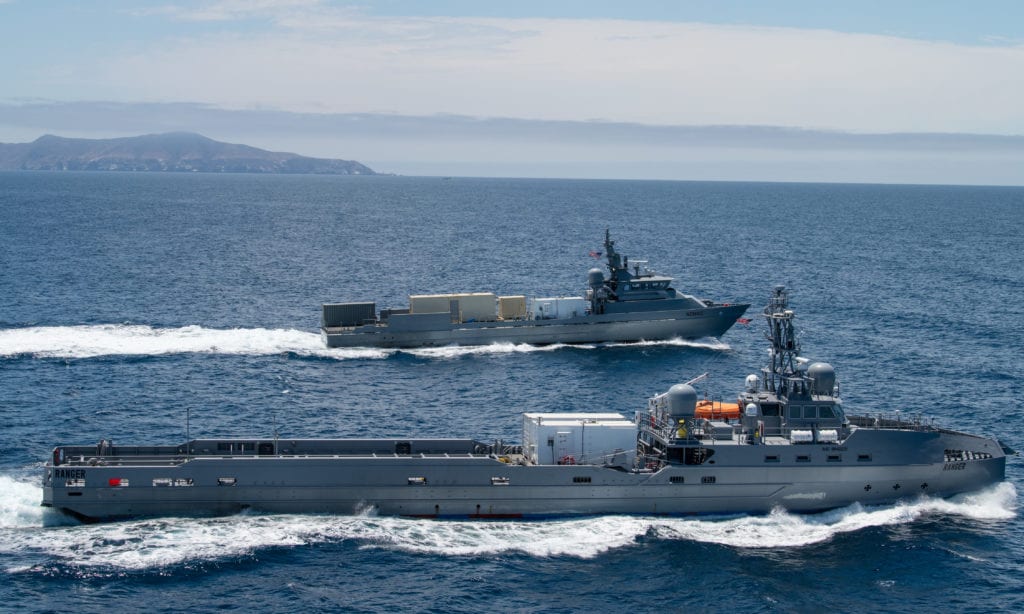
ARLINGTON, Va. — The two Ghost Fleet Overlord autonomous unmanned surface vessels (USVs) designed to experiment with unmanned fleet technologies are scheduled to be turned over to the U.S. Navy early next year, likely January, and will be joined in 2022 by two more such vessels.
The two USVs, named Ranger and Nomad, were developed by the Office of the Secretary of Defense Strategic Capabilities Office (SCO). They will be used by the Navy’s San Diego-based Surface Development Squadron One to mature technology and develop concepts of operations for unmanned combatants; tactics, techniques and procedures, and operator experience for USVs as the Navy develops it future Large USV and Medium USV.
The Overlord USVs are repurposed vessels based on an oil rig offshore support vessel design, said Luis Molina, deputy director for Strategic Capabilities for the Department of Defense, speaking to reporters in a June 13 roundtable webinar. The support vessels were designed to be robust, requiring minimal crews. The Overlord vessels feature government-furnished equipment, including a common control system.
Ranger made the transit from the Gulf of Mexico to San Diego via the Panama Canal in October, followed in May and June by Nomad. The ocean transits, planned in advance, were monitored and controlled by Sailors of Surface Development Squadron One in the shore-based Unmanned Operations Center in San Diego, where the controllers are able “to change missions in situ,” said Capt. Pete Small, the Navy’s program manager for Unmanned Maritime Systems, also speaking at the roundtable event. The Overlord USVs are equipped with sensors to “react to contacts along the way.”
Small said the Navy is looking for “supervised autonomy” as the level of control over its USVs.
Nomad, for example, sailed 4,421 nautical miles, 98% in an autonomous mode, according to a June 7 Defense Department release. Transit of the Panama Canal required the manual navigation by a skeleton crew on each ship in accordance with canal regulations.
Molina said the SCO will continue to exercise the Overlord vessels until turnover the Navy to do “fleet demonstration exercises and operational vignettes.”
“We’re currently targeting a January turnover date to the Navy,” Molina said. “But we’re working hand in hand with the Navy, and we have been for the last four years, so that handover and transition is expected to be fairly seamless. We are completing the integration of some of the systems on the ships.”
Two more Overlord vessels are funded by the Navy and are scheduled for delivery by the end of 2022, Small said, which — together with the Sea Hunter and Sea Hawk USVs — will give the Navy six unmanned ships for experimentation.






